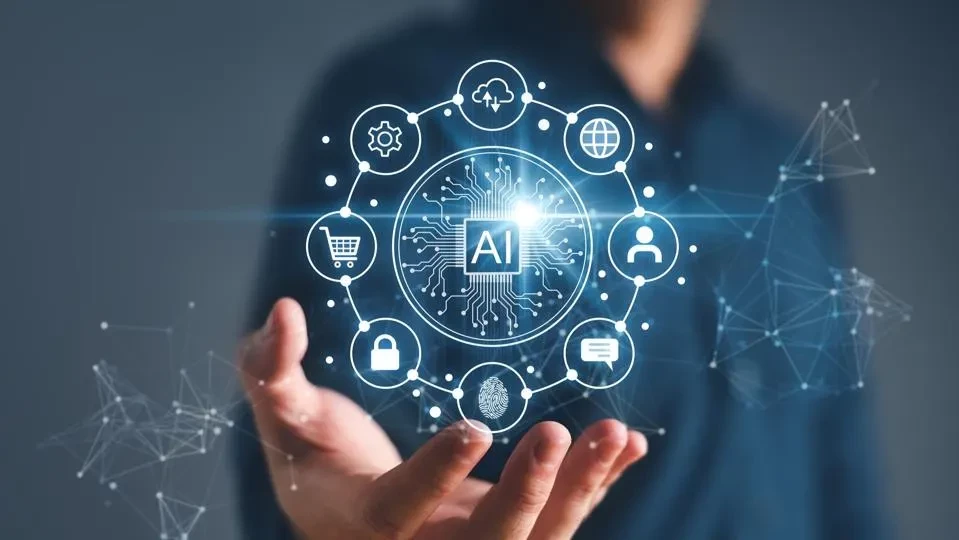
SINCE artificial intelligence (AI) became mainstream, many have viewed it as the future, with some predicting it will replace humans in various domains.
However, AI merely mimics human intelligence through sophisticated algorithms and data processing, raising important questions about its fundamental limitations.
A new concept, synthetic intelligence (SI), promises to go beyond AI’s imitative approach and could revolutionise our understanding of machine cognition.
As we stand at this technological crossroads, the question is not whether SI will replace AI, but rather how these two paradigms will coexist and complement each other in shaping our future.
Understanding synthetic intelligence
The term “synthetic” in SI does not imply artificial or fake, quite the opposite. Synthetic intelligence refers to machines that can genuinely think, perceive and potentially experience something akin to consciousness, much like humans do.
SI is created by synthesising foundational elements to produce authentic, human-like intelligence, rather than AI’s simulated approach.
While some confuse SI with AI or assume they are identical concepts, they represent fundamentally different philosophies in machine intelligence development.
- Time running out for SA-based Zimbos
- Zim needs committed leaders to escape political, economic quicksands
- Redcliff uses land to pay off water debt
- In Full: Nineteenth post-cabinet press briefing: July 05, 2022
Keep Reading
Simulation vs. synthesis
The difference between AI and SI lies at the heart of how we conceptualise machine intelligence. AI systems, despite their impressive capabilities, are not truly intelligent in the human sense.
They cannot think independently or make decisions with genuine understanding. Instead, they simulate intelligence by copying human behaviour and pattern recognition, functioning like skilled actors who can mimic actions without having genuine comprehension of what they are doing.
Synthetic intelligence seeks to create genuine, independent intelligence with its own cognitive structure, focusing on original thinking and learning abilities rather than imitation.
While AI mimics human behaviour via programming, SI aims to develop an entirely new form of intelligence through advanced algorithms and hardware.
The emerging mechanisms of SI
Current research is investigating a number of methods that could potentially enable synthetic intelligence. One such approach, sub-symbolic AI, models non-conscious processes in the human brain to process information differently from traditional symbolic computation.
This method acknowledges that a significant portion of human intelligence functions without conscious awareness.
The concept of emergence offers another fascinating avenue, where intelligence arises from the complex interplay of smaller system components, creating a whole that is genuinely greater than the sum of its parts.
This mirrors how consciousness and intelligence emerge from billions of neurons interacting in the human brain. More radically, Psi-Theory proposes exploring non-physical phenomena to achieve machine intelligence, though this remains highly speculative.
These approaches collectively aim to transcend AI’s reliance on replicating human thought patterns, focusing instead on creating systems with genuine cognitive abilities that can understand context, apply reasoning and potentially develop something resembling self-awareness.
Technologies powering the SI
Advanced technologies, such as neural networks, machine learning, and deep learning drive SI development. These systems learn from data, recognise patterns and make independent decisions without needing explicit programming for each situation.
High-performance computing infrastructure, including cloud-based systems and specialised processors, provides the computational power necessary for training and deploying complex SI models.
Reinforcement learning enables SI systems to learn through trial and error, much like humans do, enhancing their decision-making capabilities in dynamic environments.
Natural Language Processing (NLP) improves human-machine interactions, making SI systems more intuitive and responsive to human needs and communication styles.
These technologies function collaboratively to enable SI to achieve higher levels of autonomy and address complex decision-making processes that necessitate contextual awareness, thereby setting it apart from AI's more constrained, task-oriented functionality.
The path forward
The question of whether synthetic intelligence will replace artificial intelligence presents a false dichotomy.
The more likely scenario involves these two paradigms working side by side, each serving different purposes within our technological ecosystem.
l Read full article on www.theindependent.co.zw
Bangure is a filmmaker. He has extensive experience in both print and electronic media production and management. He is a past chairperson of the National Employment Council of the Printing, Packaging and Newspaper Industry. He has considerable exposure to IT networks and Cloud technologies and is an enthusiastic scholar of artificial intelligence. — [email protected].
AI will continue to excel at specific, well-defined tasks where simulation and pattern matching are sufficient, from image recognition to predictive analytics.
Its efficiency, reliability and proven track record make it indispensable for countless applications.
Synthetic intelligence, when it matures, will likely complement AI by handling situations requiring genuine understanding, contextual reasoning and adaptive learning in unpredictable environments.
SI could address challenges that AI struggles with: Navigating novel situations without precedent, understanding nuanced human emotions and intentions and making ethical decisions that require true comprehension rather than programmed responses.
Challenges, ethical considerations
Synthetic intelligence, though still in development, has the potential to change society significantly. Creating SI involves major ethical, technical and philosophical issues, including questions about consciousness, machine rights and moral responsibility.
Ensuring these systems act responsibly and avoid biases is a key challenge.
Developing SI requires strict safety measures, transparent decisions, and strong governance to maximise benefits and minimise risks for humanity.
Conclusion: A hybrid future
The future of machine intelligence likely involves a sophisticated hybrid ecosystem where AI and SI coexist and collaborate. AI will continue handling routine tasks, data analysis and predictable scenarios with remarkable efficiency.
Synthetic intelligence, as it develops, will tackle challenges requiring genuine understanding, creativity and adaptive reasoning. Rather than one replacing the other, we will see an integrated approach where each form of intelligence contributes its unique strengths, ultimately creating a more capable and beneficial technological landscape that serves humanity’s diverse needs.
technological
nurture the next generation of tech leaders. A national AI or data science challenge for students could spark creativity and drive.











